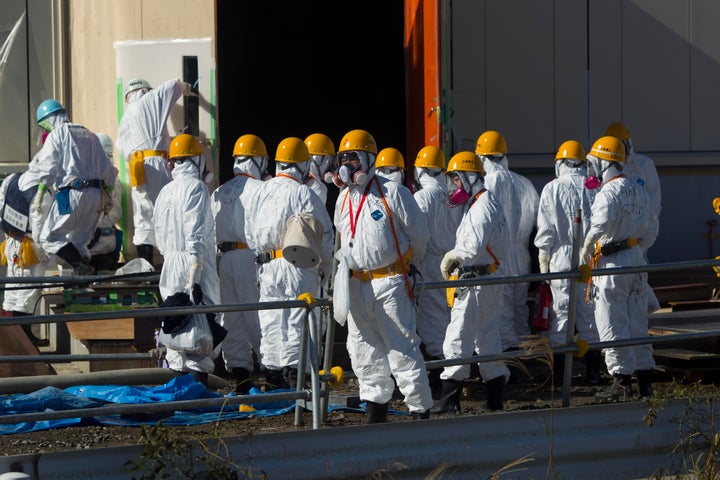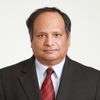
Dr. Kiyoshi Kurokawa, medical doctor, former professor at Tokyo University and the University of California, Los Angeles, and former president of the Science Council of Japan, was appointed to head the Japanese national investigation into the Fukushima nuclear disaster (see here and here).
Dr. Kurokawa was appointed by both houses of parliament and both ruling and opposition parties, unanimously, a tremendous show of respect. He has been one of the most relentless in calling for change in Japan, and Dr. Kurokawa has tirelessly worked in multiple sectors, even in entrepreneurship, or in effect to "work more and talk less."
Parallels with NASA's Space Shuttle Program Investigations
"For a Successful Technology, Reality Must Take Precedence Over Public Relations, for Nature Cannot Be Fooled" -- Richard Feynman, Nobel Prize Winner and Member of the U.S. Presidential Commission to Investigate the NASA Space Shuttle Challenger Disaster, 1986.
In an era past, with one profound statement, Richard Feynman, the iconoclastic Nobel Prize winner in physics who also used to play the bongos drums (his music CD is available), summarized the mountains of data, probabilities, opinions and testimony that were part of the U.S. Presidential Commission investigating the NASA Space Shuttle Challenger Disaster in 1986.
Dr. Feynman went off by himself to talk to engineers and technicians and found a stunning disconnect between engineers and management. Management had claimed that the probability of a launch failure was one in 100,000, but he already was certain that it couldn't possibly be accurate. Feynman estimated the probability of failure to be approximately one in 100. He used a simple technique to verify. He asked a group of NASA engineers to write down on a piece of paper what they thought the risk of failure was. Most engineers who were not part of management estimated the probability of failure to be similar to Feynman's estimate that he had not told anyone about. And going by the record, looking back, it was indeed the case.
In an eerily similar development, some engineers who used to work at nuclear plant component makers have alleged that the earthquake severely damaged the Fukushima plant even before the tsunami hit the facilities, while the general theory has been that it was the tsunami that devastated the plant and created the meltdown. Coming to a conclusion on that point also has major implications for the future of plant safety.
Feynman discovered a history of "cost-savings" that compromised security, and even that some in management did not understand the complex science. In informal discussions with technicians and engineers, he learned about the problem of the o-ring. Feynman learned from the shop-floor that an o-ring used to prevent hot inflammable gases from escaping and damaging other parts might not properly expand with the rest of the hot Shuttle booster parts, when outside temperatures fall below freezing. Until that space shuttle launch, there had never before been a launch in such cold weather, and management had ignored the concerns of engineers and technicians. The temperature on launch day was below 32 degrees Fahrenheit.
Feynman had discovered the cause of the disaster, and he only needed to prove it. He got his opportunity when he was requested to testify before the U.S. Congress on his findings. On live TV, Feynman questioned a NASA manager about the O-ring and temperature issue. he manager stated that the O-rings would function properly even in the extreme cold. Feynman then took an o-ring out of a cup of ice water in front of him, and removed the clamp off the O-ring which was being used to deliberately distort its shape. The O-ring remained distorted in shape, proving that in fact, resilience was lost with a steep drop in temperature.
While NASA did a superb job of meeting President Kennedy's challenge of putting a man on the moon and indeed in creating the re-usable shuttle space-craft, the sweeping changes that were suggested by that presidential panel, many believe, were never implemented.
Just seven years later, in 2003, the Space Shuttle Columbia disintegrated upon re-entry killing all seven on board including India-born Astronaut Kalpana Chawla. The Columbia Accident Investigating Board (CAIB) was scathing in its analysis of the underlying organizational and cultural issues that led to the accident, including NASA's decision-making and risk-assessment processes. It concluded that the organizational structure and processes were sufficiently flawed and that compromise of safety was expected no matter who was in the key decision-making positions. An example was the position of Shuttle Program Manager, where one individual was responsible for achieving safe, timely launches as well as managing/controlling costs, which are often conflicting goals. The CAIB report found that NASA had accepted deviations from design criteria as normal when they happened on several flights and did not lead to mission-compromising consequences. One of those was the conflict between a design specification stating the thermal protection system was not designed to withstand significant impacts and the common occurrence of impact damage to it during flight. The board made recommendations for significant changes in processes and organizational culture. The Space Shuttle program itself has since been abandoned or "completed."
Japan's Hopes for Change
Recently, an editorial in Yomiuri Shimbun, a widely-read Japanese newspaper, commented that this was the first time that non-officials have been appointed under law by the Japanese Parliament to investigate a national disaster and stated that Dr. Kurokawa's call to "earn trust for Japan as a nation" by sharing details of Japan's response to the nuclear crisis with the world was very welcome.
If the Dr. Kurokawa panel recommendations are not implemented, and another serious nuclear accident occurred anywhere in the world, it will likely signal the end of the worldwide nuclear industry because in today's information age, the impact of a serious nuclear accident in one country is felt in every nuclear-powered nation. Countries like India that were highly enthusiastic on nuclear power have since Fukushima changed perspective greatly. A nuclear plant at Kundankulam, Tamil Nadu, has largely been built but has been meeting vociferous protestsA senior member of the Indian Parliament told me that the nuclear program in India is in real jeopardy.
Dr. Kurokawa is known for his impeccable credentials and integrity, and that should in itself add to the trust for Japan. The world will look to the Dr. Kurokawa panel for its vision and leadership. It is not only a report to the Japanese parliament but rather, just as in the case of the Feynman presentation to the U.S. Congress, a report to history. The world will undoubtedly be watching.
